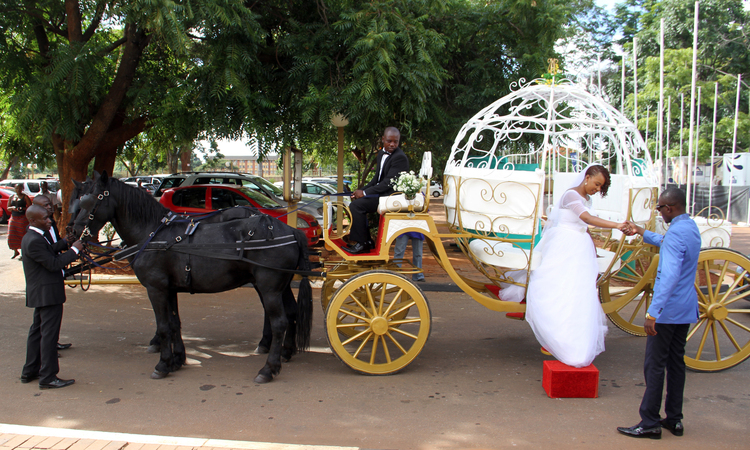
The Sunday Mail

The groom’s team descends on the dance floor in old-fashioned outfits comprising bell-bottomed trousers and unmatched latch-less blazers, much to the amusement of guests.
Tendai Mbirimi – Bridal Writer
Not to be outdone, the bridessmaids simultaneously enter the stage clad in an array of yesteryear costumes, typically attire for elderly village women on special days.
Suddenly, the beat changes from the sounds of modern R&B to our old school jiti or kanindo, accompanied by a kongonya dance.
In no time everyone is on their feet just to have a glance at the top-drawer gyrations courtesy of the wedding party.
Old school dances have become a common scene at wedding receptions.
Though interesting, they have left many people wondering where they are coming from and how they relate to white weddings, which are supposed to be treated to composed and “decent” dances.
Though some people incorporate this in their wedding reception programme just to add flair, this phenomenon is part and parcel of English weddings to which Zimbabwe’s style of weddings are derived from.
These yesteryear dances and music fit well within the ancient English rhyme (“Something Old, Something New, Something Borrowed, Something Blue, A Sixpence in your Shoe”).
Something old represents continuity; something new offers optimism for the future, something borrowed symbolises borrowed happiness, something blue stands for purity, love, and fidelity while a sixpence in your shoe is a wish for good fortune and prosperity. This remains largely a British custom.
Typically these rounds of dances are reserved for the wedding party including the ushers, flower girl and ring bearer. The grooms men should pair up with the bridesmaids while the best man dances with the bride and the maid of honour dances with the groom.
Traditionally, wedding receptions are filled with music and dancing, as loved ones joyously celebrate their happiness for the bride and groom.
Most wedding reception time lines incorporate structured dances that honour special loved ones and encourage the guests to get on to the dance floor.
For each dance, couples need to choose a meaningful song and provide the play-list to the disc jockeys. DJs should limit each song to two minutes.
Also, there are no requirements for anyone to dance, so it is important for DJs to be sensitive to the feelings of those relatives who are uncomfortable in the limelight.
Dating back to the era of Victorian balls, wedding etiquette suggests that the bride and groom should dance first. As hosts of the event, it is their responsibility to kick off the festivities.
Many couples head directly to the dance floor after making their grand entrance into the venue, where the DJ presents them to the guests for the first time as husband and wife. Some choose to break up the dinner hour by entertaining the guests between courses while others wait until the meal concludes.
And just like in the past, the first dance between the bride and groom is one of the most anticipated moments of the event, both by the guests and the newlyweds.
Many couples opt for a simple, swaying slow dance as they get a few blissful minutes alone in each other’s arms.
If your wedding plans include a reception, do not forget to think about the wedding dance.
Your first dance together as husband and wife should be truly magical. If you plan and practice early, you will both be confident and will greatly impress your friends and family.
Who knows, you two could be good dancers anyway?
Please send feedback to [email protected]



